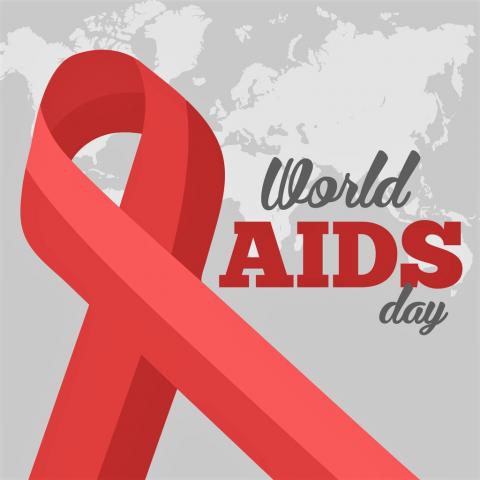Some Reflections on World AIDS Day 2020 Amidst COVID-19

A lot has been accomplished over the past 20 years in the fight against HIV and AIDS. According to UNAIDS data, of the 38 million people living with HIV, 25.4 million people are now on treatment. New HIV infections have been reduced by 23% since 2010, largely due to a substantial decrease of 38% in Eastern and Southern Africa.
Yet, challenges persist. HIV infections have increased by 72% in Eastern Europe and Central Asia, by 22% in the Middle East and North Africa, and by 21% in Latin America. Across the world, there were 1.7 million new infections, and still 690,000 AIDS-related deaths in 2019. The 2020 targets of reducing AIDS-related deaths to fewer than 500,000 and new HIV infections to fewer than 500,000 will not be met. And the impact of the COVID-19 pandemic stands to further slow the required progress to end AIDS as a public health threat by 2030.
The Basis for Optimism
Looking back on what has been achieved in the past two decades, however, should fill us with optimism that momentum will be regained. As recounted by Dr. Peter Piot, the former Executive Director of UNAIDS, in his memoire, No Time to Lose, after overcoming many obstacles and naysayers, the United Nations (UN) system, with its many organizations and agencies, working together with governments, civil society and religious leaders, groups representing people living with AIDS, and eventually the pharmaceutical industry, came together in the first decade of the XXI Century to redefine existing HIV and AIDS prevention and treatment paradigms.
There were also some landmark political events in this period, such as the UN Security Council Session held in January 2000 that for the first time focused on AIDS as a global health challenge, and the UN Special Session on AIDS held in June 2001, which paved the way for establishment of the Global Fund to Fight AIDS, Tuberculosis and Malaria and the U.S. President's Emergency Plan for AIDS Relief (PEPFAR), a great legacy of former United States President George W. Bush. Not only was the power of scientific and technological developments leveraged to confront the global epidemic, but an unprecedented commitment of funds helped scale up the international response.
In the early 2000s, I was blessed to be working in the Caribbean Region, at a time when it became a trailblazer in the fight against HIV and AIDS. Beginning with a meeting at the World Bank Group (WBG) in Washington DC in June 2000, Caribbean finance ministers and officials from international organizations placed the disease and its threat in a sobering context. This was followed by a gathering in Barbados later that year where the international community, heeding former Prime Minister Owen Arthur’s call— “We do not have a choice in the matter—we must act now”—pledged millions of dollars to support a regional response. With the establishment of the Pan Caribbean Partnership Against HIV/AIDS (PANCAP) in 2001, spearheaded by Sir George Alleyne, the Director Emeritus of the Pan American Health Organization, and the Caribbean Community (CARICOM), the regional political umbrella organization, an international best practice evolved as a unique example of collective action to strengthen a regional response to a health crisis. The World Bank Group contribution to that effort was framed within the US$150 million multi-country program that funded for the first time globally, beginning in Barbados in 2001, antiretroviral treatment, along with related health system strengthening investments and intersectoral prevention efforts.
As more and more HIV-infected people began to benefit from access to treatment, some coffin-makers were put out of business as told in a story about Lesotho published in 2012 by the New York Times, and HIV and AIDS de facto became a chronic condition that requires long-term care across the world.
Some Lessons for the Future
In the face of newly emerging infectious diseases of animal origin such as COVID-19, and the still high prevalence of old scourges such as HIV and AIDS, malaria, yellow fever, and tuberculosis, coupled with the rapid increase in the relative importance of non-communicable diseases as a growing global health challenge, a major rethinking is needed globally and sustained action is required to transform how health services are organized, funded, and delivered to meet the changing health needs of the population in an interconnected world.
The social and economic devastation brought by the COVID-19 global crisis has shown that disease prevention and public health preparedness can no longer be an afterthought in the universal health coverage agenda. Rather, they need to be an integral element of a care continuum to anticipate, detect, and prevent the spread at the national, regional and global levels of uncontrolled infectious disease outbreaks that do not respect national borders, and to facilitate timely access to quality health services when required by the population.
This also calls for integration and resource-sharing, leveraging resources, experience, and models of existing programs to place greater emphasis on primary health care and community-based interventions that serve any health condition and comorbidities. We must also advocate for the adoption of inclusive and sustainable schemes to fund the effort at the country level, offering financial protection to the population from the impoverishing effect of ill health, premature mortality, and disability.
And, as the response to the HIV and AIDS epidemic clearly demonstrated over the past twenty years, knowledge generation and sharing across the world and their adaptation to local conditions, are paramount to advance the global health agenda in the future.
Indeed, the scientific developments that helped understand, treat, and prevent HIV infection and AIDS, and the unprecedented scientific collaboration unleashed in 2020 to develop a safe and effective COVID-19 vaccine in a record eight months, bode well for the promise of a world free of the threat of HIV and AIDS, and the improvement of people’s health and healthy longevity globally.
